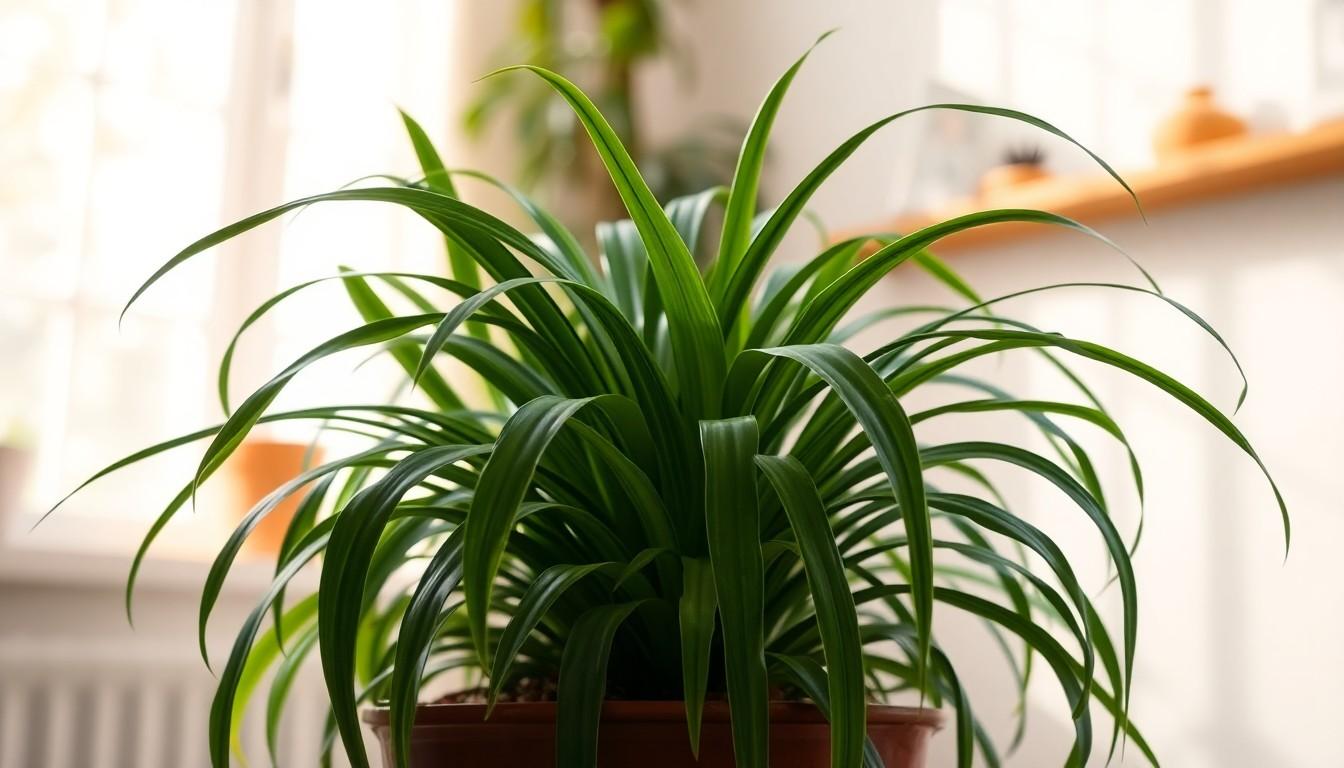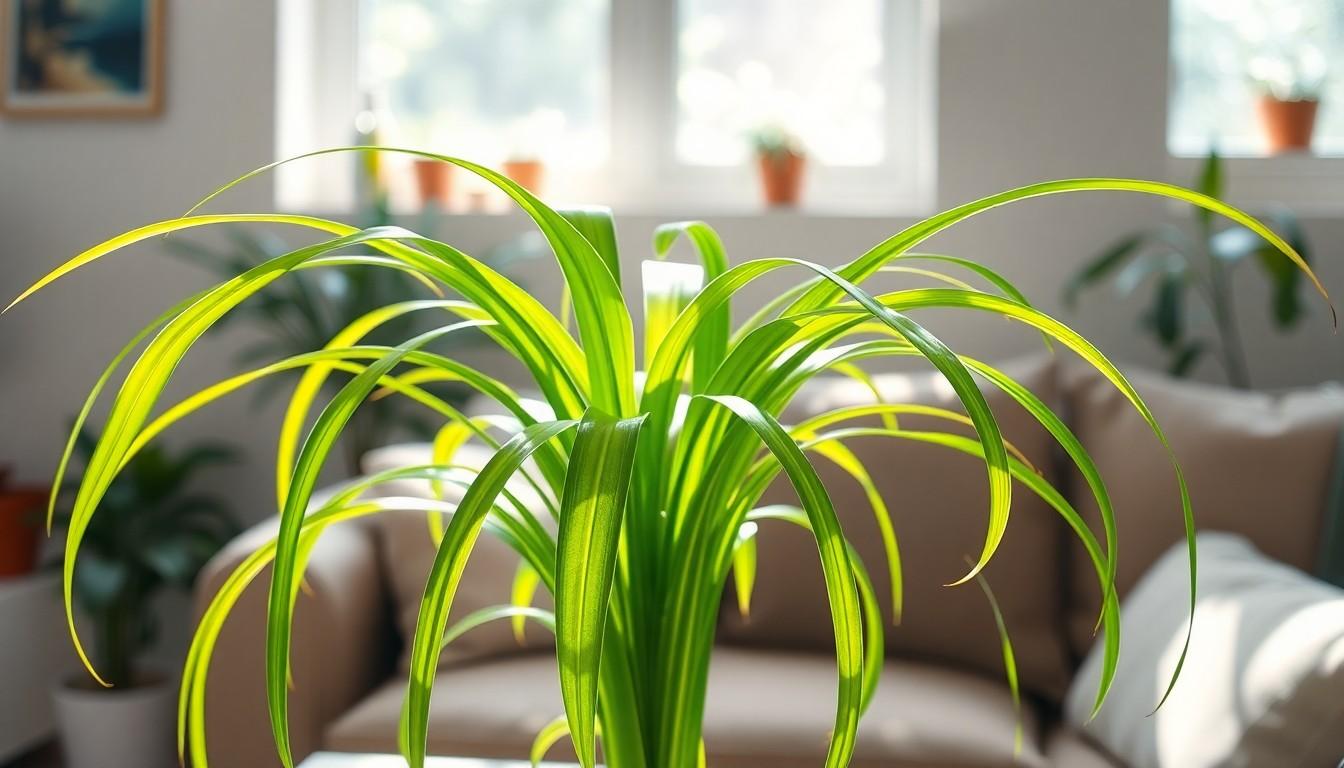Spider plants are the ultimate houseplant superheroes, thriving in homes around the world. But have you ever wondered where these green wonders actually come from? Spoiler alert: they didn’t just swing into existence from your local garden center.
Overview Of Spider Plants
Spider plants, known scientifically as Chlorophytum comosum, originally hail from tropical and southern Africa. These adaptable plants thrive in various climates, making them popular among houseplant enthusiasts in many regions. Spider plants exhibit distinct arching green leaves that sometimes feature white stripes, contributing to their ornamental appeal.
Native to warm, moist environments, spider plants flourish in indirect sunlight. Their ability to tolerate low light and varying humidity levels enhances their reputation as resilient indoor plants. Propagation occurs through plantlets, allowing for easy expansion of collections.
These plants stimulate proper air quality, acting as natural air purifiers by removing toxins such as formaldehyde and xylene. Studies indicate that they effectively enhance indoor environments, making them more pleasant and healthier.
Regarding care, spider plants require minimal water and can withstand infrequent feeding. Adjusting watering schedules based on seasonal changes helps maintain their vibrancy. They adapt well to potting in different soil types, showcasing versatility in gardening practices.
Research shows that occasional pruning supports healthy growth, encouraging stronger root systems and more robust foliage. This adaptability plays a crucial role in their popularity, as they fit various lifestyles without extensive maintenance.
Geographic Distribution

Spider plants, scientifically known as Chlorophytum comosum, originate from specific regions in Africa, marking their global presence. This intriguing distribution highlights their adaptability across various environments.
Native Regions
Native to tropical and southern Africa, spider plants occupy diverse climates. Countries such as South Africa, Kenya, and Tanzania provide natural habitats that foster their growth. These regions experience mild temperatures, contributing to the spider plant’s resilience in different indoor environments.
Natural Habitats
Spider plants thrive in high humidity and well-drained soils. These plants often grow in sheltered areas, such as forest understories, where indirect sunlight prevails. Additionally, they can find their niche along riverbanks and in grassy areas, showcasing their versatility in habitats.
Cultural Significance
Spider plants hold cultural importance in various contexts, reflecting their versatility and adaptability. Their historical uses vary from medicinal to decorative.
Historical Use
Medicinal practices in some African cultures utilized spider plants for their potential health benefits. Communities regarded these plants as symbols of resilience and resourcefulness, given their ability to thrive in challenging environments. Traditional herbalists sometimes prepared herbal remedies from the leaves, showcasing a connection between plant and ancestry. Landscape designs in ancient times also featured spider plants, emphasizing their aesthetic appeal in gardens.
Modern Popularity
In contemporary households, spider plants symbolize easy care and greenery. Homeowners value these plants for their air-purifying abilities, knowing they enhance indoor air quality. They fit well in various décor styles, appealing to both minimalists and nature enthusiasts. Social media influencers frequently highlight spider plants in plant care tutorials, boosting their popularity. Additionally, their reputation as beginner-friendly plants attracts a new generation of gardeners.
Benefits Of Spider Plants
Spider plants offer numerous advantages that make them ideal indoor companions. Air purification stands out as one of their primary benefits. Studies conducted by NASA in 1989 highlighted their effectiveness at removing pollutants like formaldehyde, xylene, and other harmful compounds from indoor air.
Easy care appeals to many plant enthusiasts. Low maintenance requirements allow even novice gardeners to enjoy their beauty. Spider plants thrive in indirect sunlight and tolerate fluctuations in humidity, ensuring they adapt well to various home environments.
Another notable benefit includes their propagation capabilities. Spider plants produce offshoots, or “pups,” that can be easily replanted, leading to cost-effective plant expansion. This feature encourages a sharing culture among plant lovers, as healthy pups can be gifted to friends and family.
Health benefits further enhance their allure. Exposure to greenery, such as spider plants in home spaces, can boost mood and reduce stress levels, contributing to a healthier lifestyle. Their presence may support improved concentration and productivity in workspaces, making them suitable for home offices.
Versatile styling options also influence their popularity. Adaptable to various decor styles, spider plants can enhance both modern and traditional interiors. Placing a spider plant on a windowsill or shelf not only adds visual interest but also brings a touch of nature indoors.
Spider plants encompass numerous benefits, from air purification and ease of care to health improvements and aesthetic versatility. Their unique characteristics solidify their status as beloved houseplants worldwide.
Conclusion
Spider plants are more than just attractive houseplants; they carry a rich heritage rooted in tropical and southern Africa. Their adaptability to different environments has made them a favorite among plant enthusiasts worldwide. Understanding their origins not only enhances appreciation for these resilient plants but also informs better care practices. As they continue to thrive in homes across the globe, spider plants serve as a testament to nature’s ability to flourish in diverse settings.

